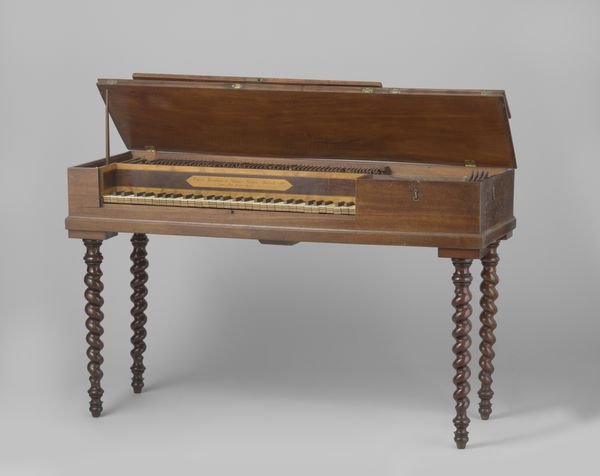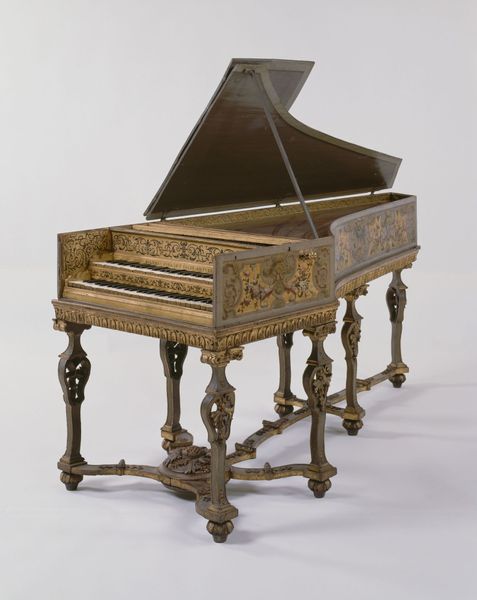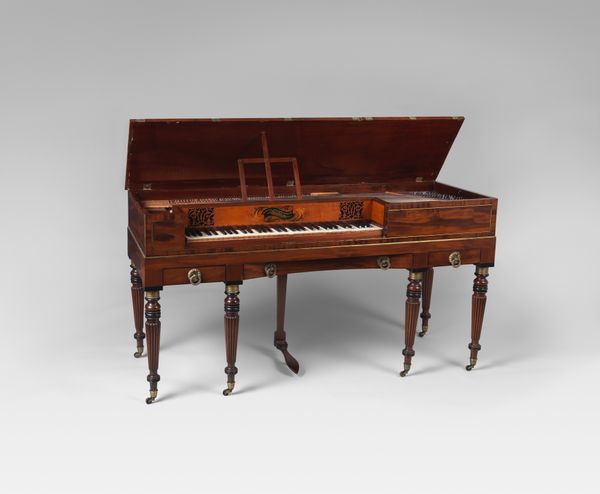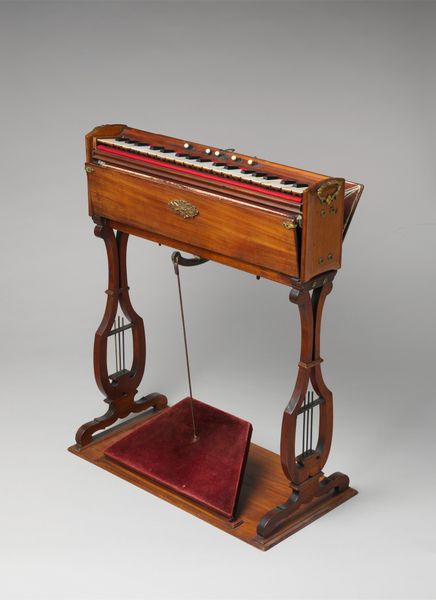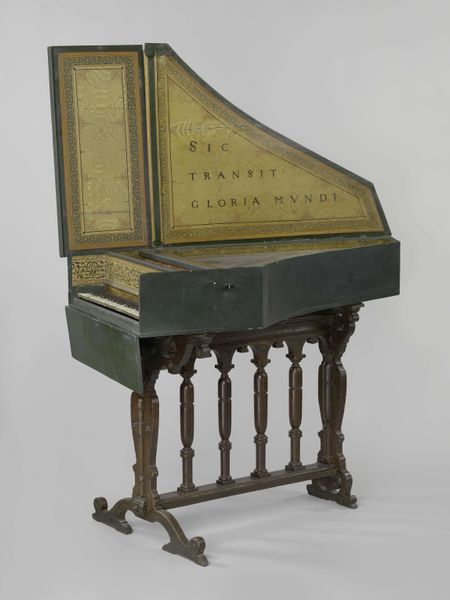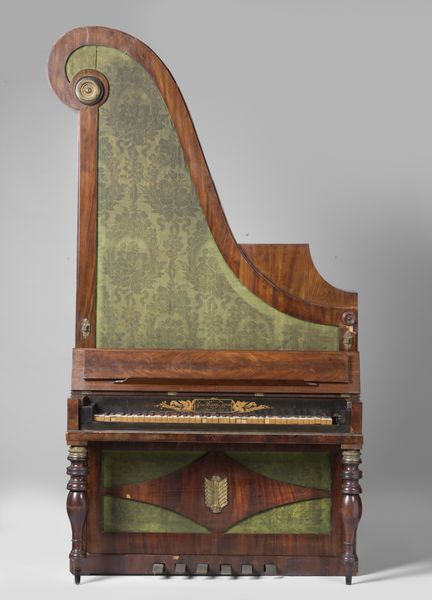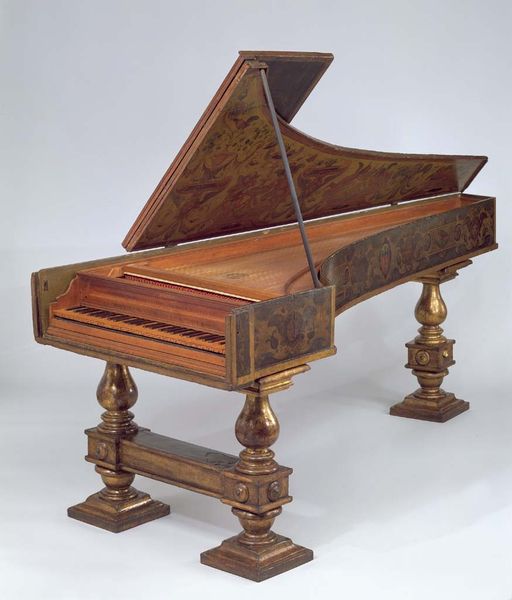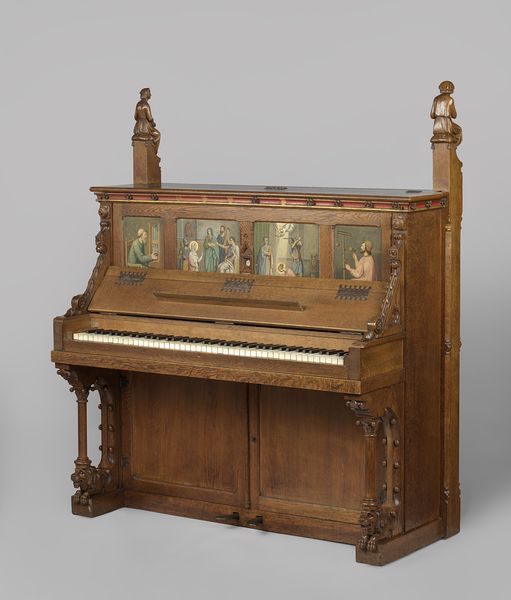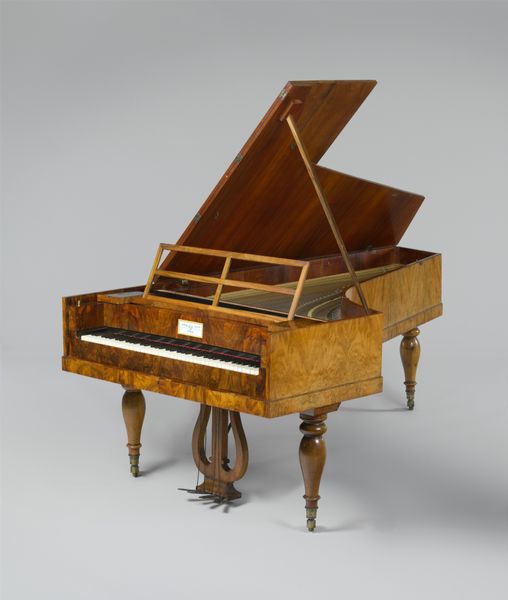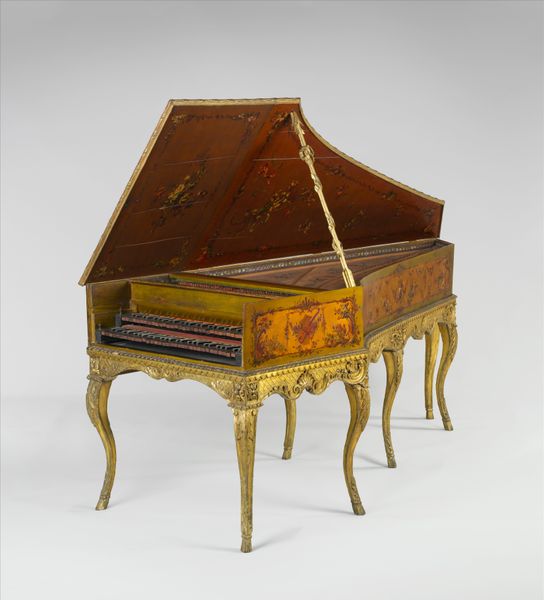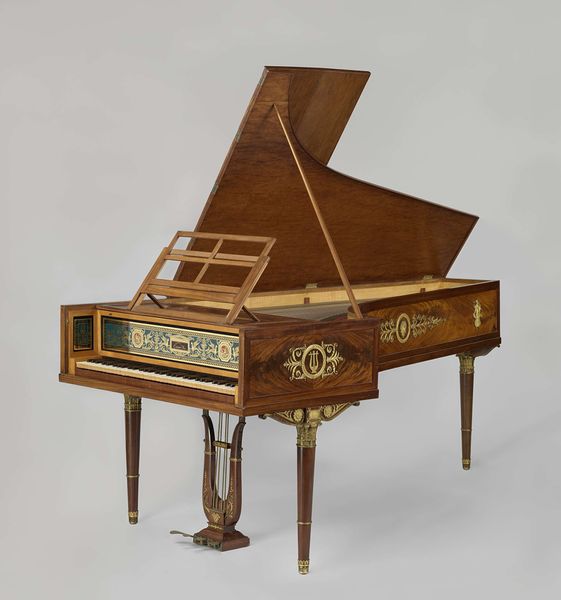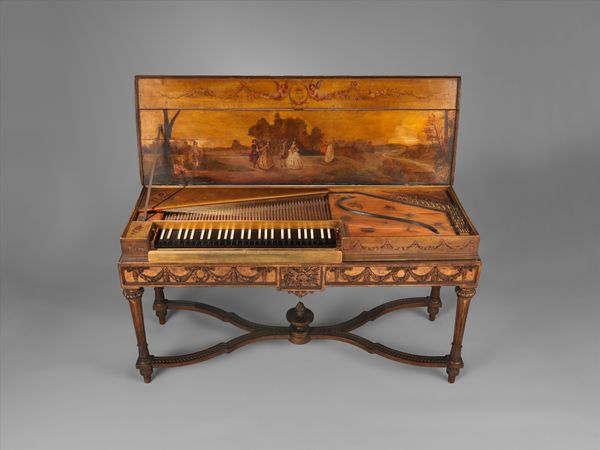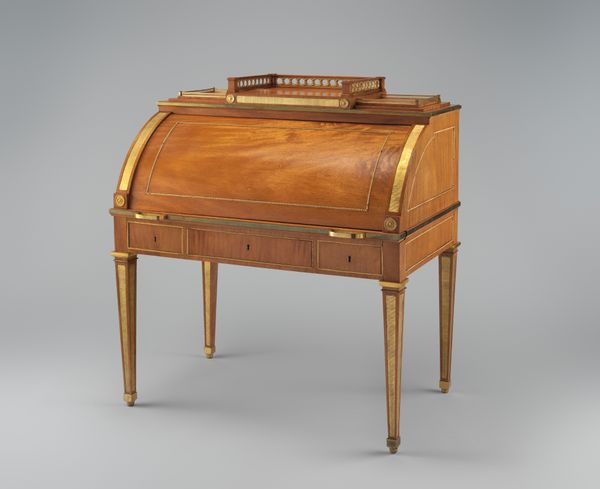
sculpture, wood
#
sculpture
#
sculpture
#
wood
#
musical-instrument
Dimensions: 142cm x 76cm x 195cm
Copyright: Public Domain
Editor: We're looking at the "Upright Harp Piano," created around 1843 by F. Beale & Co. It’s currently housed at the Metropolitan Museum of Art. Made from wood, it’s incredibly ornate; the dark wood is intricately carved, giving it a really dramatic, almost gothic feel. What sort of symbolism do you see embedded in this design? Curator: The most immediately striking symbolic element is, of course, the fusion of the harp and piano. Both instruments carry significant cultural weight. The harp, historically, evokes images of angels, mythology, and celestial harmony. It suggests a higher plane of existence, almost otherworldly music. Do you see how this symbolism would play with societal values at that time? Editor: I think I understand. The harp provides spiritual context. And the piano? Curator: The piano, in the 19th century, became a symbol of domesticity and refinement. It was the center of entertainment in the home, especially for the rising middle class. Think of it as a social signifier. This piano, therefore, isn't just a musical instrument; it's a visual representation of aspiration, of bringing a touch of the divine, suggested by the harp, into the domestic sphere, which is enhanced with elaborate ornament. Note the foliate carvings – what comes to mind? Editor: Nature, abundance, almost a Garden of Eden theme. Curator: Precisely. So, the instrument becomes a carefully constructed symbol of cultivated taste and social mobility, expressing desired cultural associations. How does this alter your understanding of its design? Editor: It changes everything. I saw an ornate piano, now I see a family's ambitions made visible. Thank you, I see and hear it completely differently. Curator: Indeed, recognizing how artists and artisans embed culturally understood symbols unlocks entirely new meanings within artwork.
Comments
No comments
Be the first to comment and join the conversation on the ultimate creative platform.
